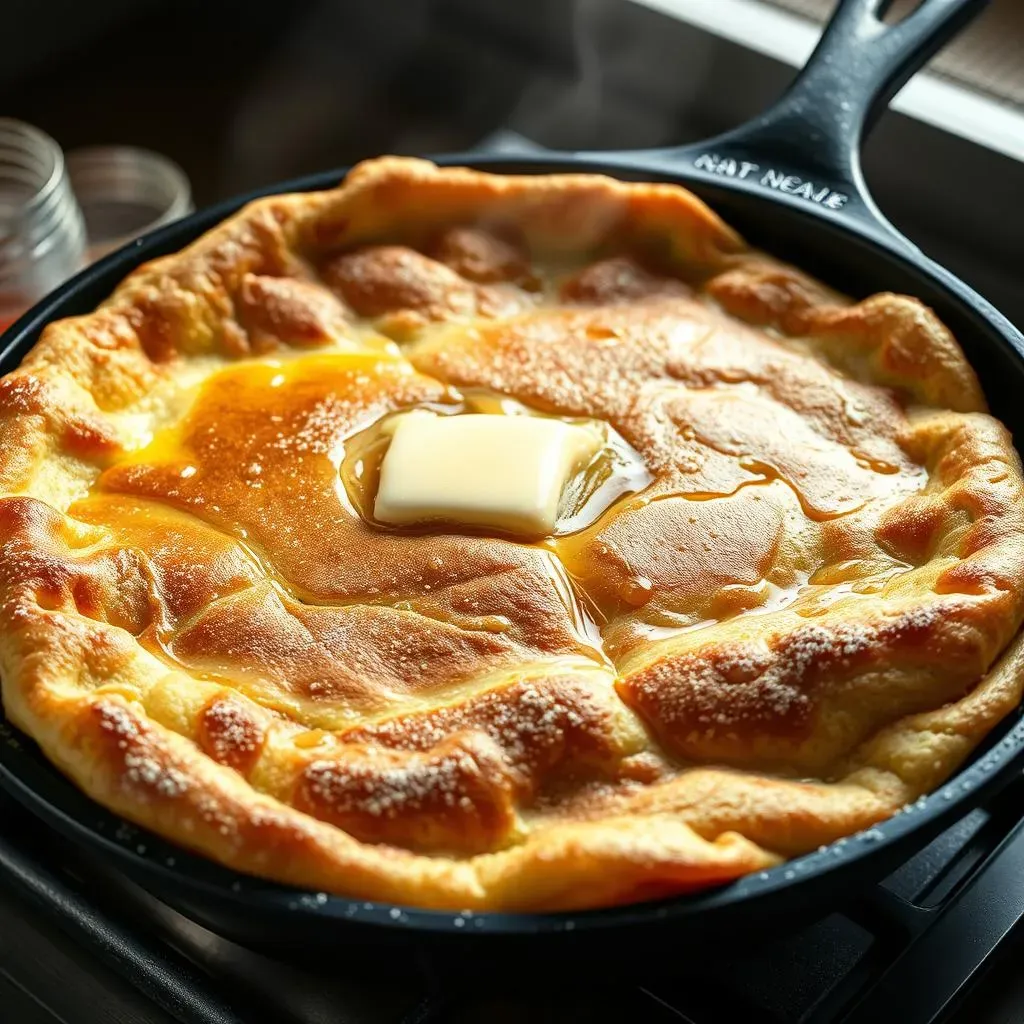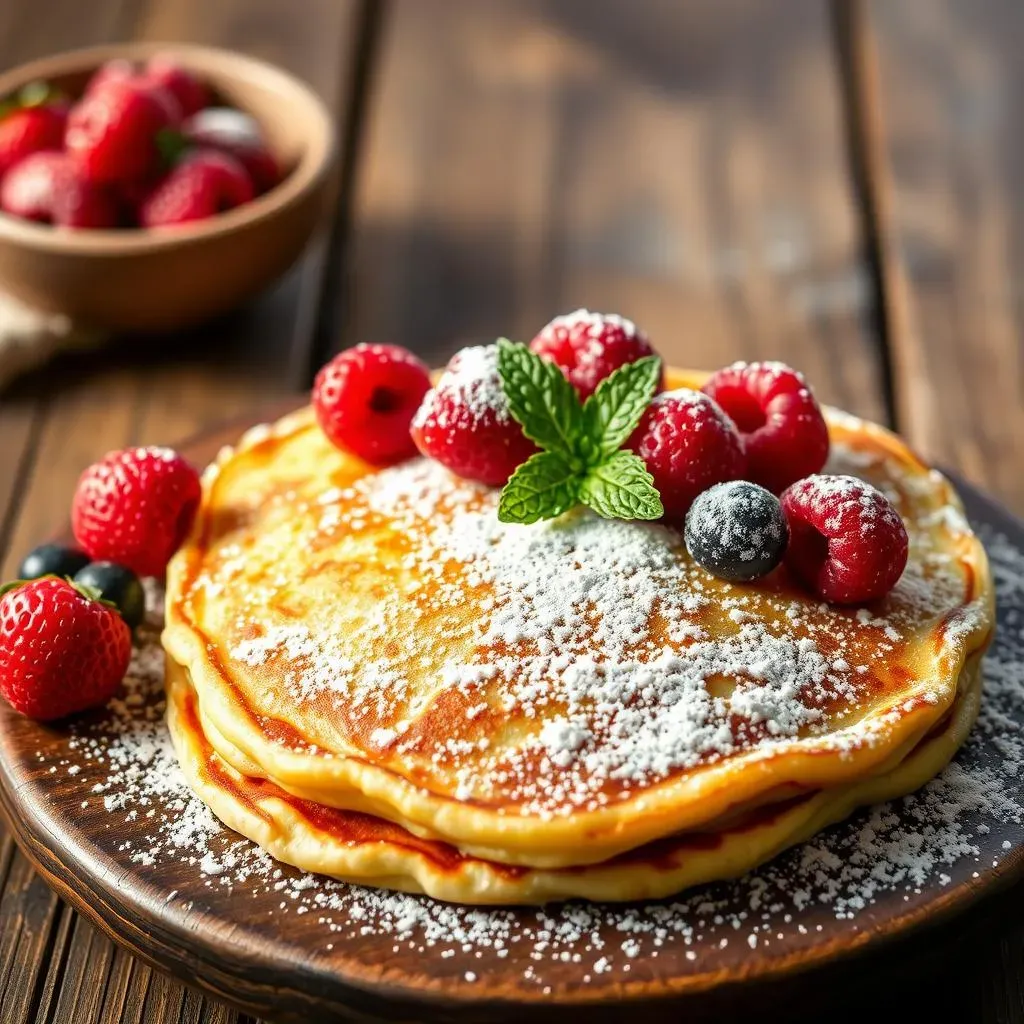Table of Contents
Ever heard of a breakfast that’s both ridiculously easy and unbelievably impressive? That's the magic of the German pancake. It's not your typical stack of flapjacks, oh no. This is a puffy, oven-baked wonder, sometimes called a Dutch baby, that’s more like a giant, delicious cloud than a flat disc. If you're looking for a fuss-free way to wow your family or just want a change from the usual morning routine, you've come to the right place. We're diving into what makes this dish so special, and why it's become a beloved staple in homes around the world. This article will walk you through everything, from the basic concept to the nitty-gritty of making your own perfect german pancake recipe. We'll discuss the simple ingredients, the easy steps, and all the tasty ways you can customize it, so get ready to transform your breakfast game with this surprisingly simple yet elegant meal. We will explore the history, preparation, and delicious variations of this fantastic dish.
What Exactly IS a German Pancake?

What Exactly IS a German Pancake?
A Pancake, But Not Really
Okay, so you’ve heard the name “German pancake,” but what *is* it, really? It's not like those flat, griddle-cooked pancakes you might be used to. Think of it more like a giant, puffy popover, or a Yorkshire pudding’s breakfast cousin. It's baked in the oven, usually in a big pan, and it rises dramatically while cooking, creating this gorgeous, golden, and slightly crispy edge with a soft, custardy center. It’s a showstopper without any of the fuss. I always find it funny how something so simple can look so elegant.
Why It's Different
The magic of the German pancake lies in its simplicity. It’s made with basic ingredients – eggs, milk, flour, and a touch of salt – that create a batter that’s more liquid than traditional pancake batter. This liquid batter, when baked in a hot oven, goes through a transformation. The steam from the liquid causes it to puff up, creating those iconic high sides and a unique texture. It's a bit like a science experiment you can eat, and it's seriously fun to watch it rise in the oven. You’ll think you are a master chef, but honestly, it’s the easiest thing ever.
Feature | German Pancake | Typical Pancake |
|---|---|---|
Cooking Method | Baked in the oven | Cooked on a griddle |
Texture | Puffy with crispy edges, soft center | Flat, more uniform texture |
Batter Consistency | Thin, liquid batter | Thicker batter |
Rise | Rises dramatically in the oven | Rises slightly on the griddle |
A Bit of History (and Confusion)
Now, here’s where things get a little interesting. Despite the name, the German pancake isn't really German. It’s often called a “Dutch baby,” which is a bit of a misnomer too. The name "Dutch Baby" is believed to have originated in the United States in the early 1900s, where a restaurant owner's daughter supposedly mispronounced "Deutsch" (German) as "Dutch." So, it’s really an American invention with a confusing name. The important thing is, whatever you call it, it’s absolutely delicious and a fantastic dish to have in your breakfast repertoire. So, next time someone asks what it is, you can tell them the whole story!
Making the Perfect German Pancake Recipe

Making the Perfect German Pancake Recipe
Simple Ingredients, Big Flavor
Okay, let’s get down to brass tacks, shall we? Making the perfect German pancake isn't about fancy techniques or exotic ingredients. It’s about nailing the basics. You’ll need just a handful of things: eggs, milk, flour, a pinch of salt, and some butter. That’s it! I know, it sounds too easy to be true, right? But trust me, the magic lies in the proportions and a few key steps. It’s like building with LEGOs, the foundation is simple, but the end result is impressive. The eggs provide structure, the milk adds moisture, and the flour gives it that light, airy texture. It's all about creating that perfect balance of wet and dry, and a bit of patience in the oven.
Step-by-Step Guide
First, you’ll want to preheat your oven to a nice, hot 425°F (220°C). While the oven is heating up, place a generous amount of butter (about 2-3 tablespoons) in a metal baking dish or cast iron skillet and pop it into the oven to melt. This is key! The hot butter will help create that crispy edge we all love. In a blender, or a bowl if you’re feeling old school, whisk together your eggs, milk, flour, and salt until it’s smooth. You don't want any lumps, so keep going until it’s nice and consistent. Carefully pour the batter into the hot, buttered dish, and then it’s time for the oven. Bake for about 20-25 minutes, or until it’s puffed up and golden brown. You'll see it rise like a hot air balloon, which is seriously cool, then watch it fall as it cools. Don’t worry, that’s totally normal. It's a bit like watching a magic trick, but the best part is you get to eat the results!
Step | Action |
|---|---|
1 | Preheat oven to 425°F (220°C) with butter in baking dish |
2 | Blend or whisk eggs, milk, flour, and salt until smooth |
3 | Pour batter into hot, buttered dish |
4 | Bake for 20-25 minutes until puffed and golden |
Pro Tips for Pancake Perfection
Want to take your German pancake game to the next level? Here’s a few things I’ve learned along the way. First off, use a metal pan if you can. It heats up more evenly and helps with that crispy edge. A glass pan works too, but the results might be slightly different. Second, don’t open the oven door while it’s baking. I know it’s tempting to peek, but resist! You need that consistent heat to get the perfect rise. And lastly, don't overmix the batter. A few lumps are okay, just make sure it’s mostly smooth. Overmixing can make the pancake tough, and we want it light and airy. Think of it as a delicate dance between ingredients and heat, and with a little practice, you’ll be making German pancakes like a pro in no time. It's all about those little details that add up to a big, delicious difference.
German Pancake Recipe: Tips, Toppings, and More

German Pancake Recipe: Tips, Toppings, and More
Toppings Galore
Alright, you’ve got your perfectly puffed German pancake, and it’s looking absolutely gorgeous. Now comes the fun part: toppings! This is where you can really let your creativity shine. The classic choice is a dusting of powdered sugar and a squeeze of fresh lemon juice. The tartness of the lemon cuts through the richness of the pancake, creating a delightful balance. But why stop there? You could go for a drizzle of maple syrup, a dollop of whipped cream, or a generous helping of fresh berries. Think strawberries, blueberries, raspberries – the options are endless. I once tried a combination of caramelized apples and cinnamon, and it was like a warm hug in every bite. Don’t be afraid to experiment and find your perfect combo. It's like a blank canvas, just waiting for your personal touch.
Flavor Variations
Want to mix things up a bit? You can easily tweak the basic recipe to create different flavor profiles. For a hint of warmth, add a dash of vanilla extract or cinnamon to the batter. If you're feeling adventurous, try a bit of nutmeg or cardamom. For a more savory option, you can skip the sugar and add some herbs like thyme or rosemary. I’ve even seen people add a touch of cheese to the batter for a cheesy, savory pancake. It's all about having fun and playing around with different flavors until you find what you love. The beauty of this recipe is its versatility; it’s a great base for any flavor you fancy. It’s like a choose-your-own-adventure breakfast, and the possibilities are truly endless.
- Classic: Powdered sugar and lemon juice
- Sweet: Maple syrup, whipped cream, fresh berries
- Warm: Caramelized apples and cinnamon
- Savory: Herbs (thyme, rosemary), cheese
Serving Suggestions
German pancakes are best served immediately after they come out of the oven. They start to deflate as they cool, which is perfectly normal, but you'll want to enjoy them at their puffiest best. Serve them straight from the pan, family-style, so everyone can dig in. It's perfect for a weekend brunch or a special occasion breakfast. It’s also a great option for a casual weeknight meal when you’re craving something a little different. I remember one time when my friends came over unannounced, and I whipped up a German pancake in no time, and everyone was impressed. It’s that kind of dish that looks like you spent hours on it, but it’s actually incredibly simple. It’s a crowd-pleaser, and it's always a hit.
Troubleshooting Tips
Sometimes, things don't go exactly as planned. If your pancake isn't puffing up, make sure your oven is hot enough and that you haven’t opened the door while it was baking. The hot butter in the pan is also crucial for that initial rise. If your pancake is coming out tough, you might be overmixing the batter. Remember, a few lumps are okay. And if you are finding your pancake is browning too quickly, try lowering the oven temperature slightly or moving the pan to a lower rack. It’s all about trial and error. Don't get discouraged if your first few attempts aren't perfect. Practice makes perfect, and each time you make it, you'll get better and better. It’s like a fun cooking challenge, and the reward is a delicious pancake.
Issue | Possible Cause | Solution |
|---|---|---|
Not puffing up | Oven not hot enough, butter not hot | Ensure oven is preheated, use hot butter |
Tough texture | Overmixing the batter | Mix until just combined, a few lumps are fine |
Browning too quickly | Oven too hot | Lower oven temp, move to lower rack |